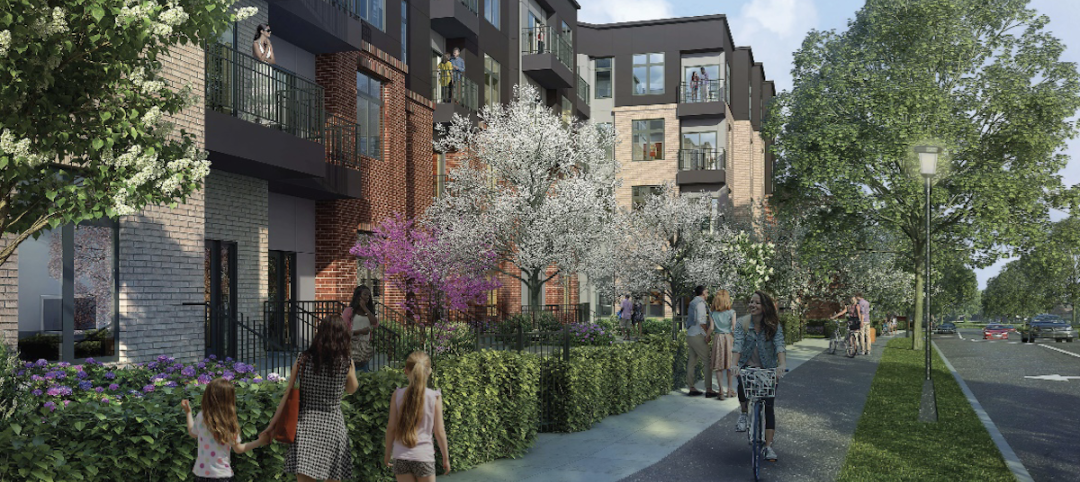The San Francisco Department of Building Inspection announced a series of new building code guidelines clarifying adaptive reuse code provisions and exceptions for converting office-to-residential buildings. Developed in response to the Commercial to Residential Adaptive Reuse program established in July 2023, the guidelines aim to increase the viability of converting underutilized office buildings into housing by reducing regulatory barriers in specific zoning districts downtown.
This effort is one component of the Mayor's recently announced 30x30 Plan to convert at least 5 million square feet of office space to approximately 5,000 units of housing by 2030. It also falls under the umbrella of the Roadmap to San Francisco Future – a comprehensive plan to reinvigorate downtown in response to the COVID pandemic. The new guidelines, detailed in Information Sheet G-29 and summarized in a resource sheet, clarify and, in some cases, reduce adaptive reuse building code provisions related to building envelope, exterior walls and openings, means of egress, ventilation, lighting, unit size, earthquake safety, and accessibility.
“There are many buildings that may benefit from these adaptive reuse guidelines,” said Department of Building Inspection Director Patrick O’Riordan. “The important thing is that we find ways to help developers convert these older office buildings without sacrificing residential safety requirements. These guidelines strike just the right balance and should add more certainty to the design and review processes.”
The Department of Building Inspection collaborated with the San Francisco Fire Department, San Francisco Planning Department, the Mayor’s Office of Economic and Workforce Development, and various community partners. An Office-to-Residential Task Force was established that included eleven experts from the fields of architecture, engineering, fire protection, building codes, historic preservation and real estate development, to better understand the economic roadblocks. Over the course of a year, these experts donated their time to attend dozens of meetings with these city agencies to develop the guidelines.
"By working together, we hope to unlock the ability to create more housing and re-energize San Francisco's downtown," said Skidmore, Owings & Merrill (SOM) Architect Lisa Follman, an American Institute of Architects (AIA) member who led the task force. “By establishing clear guidance, we hope to enable architects, engineers, and developers to find innovative design solutions to unlock the potential of these historic buildings.”
Clarifications of note include:
- Earthquake safety: provides multiple paths for review and approval based on building-specific considerations on a case-by-case basis.
- Exterior wall openings: creates a pathway for approval of more exterior wall openings (such as doors and windows) than allowed by the existing code if the proper design equivalencies are in place.
- Direct light: the new guidelines offer indirect light (such as natural light from one room illuminating an adjacent room through an interior window), sky lights or light courts as alternatives when direct light isn’t feasible in all habitable rooms.
- Elevator upgrades: the document codifies that existing low-rise buildings do not need to upgrade their elevators to meet the current code requirements for gurney size, hoistway construction, or Firefighters Emergency Operation–an upgrade that has been a substantial barrier to adaptive reuse of this building type.
Previously, developers were unable to accurately predict or calculate the upgrades needed to adapt a building for residential uses, dissuading the conversions from happening all together. In addition to offering a clearer picture of what is needed up-front, the new guidelines are expected to lower design and construction costs while reducing construction permitting times for downtown commercial-to-residential conversions. This effort builds on the progress San Francisco has already made to speed up housing-related building permit review and issuance times. In 2024 to date, housing-related In-House Review permits (featuring the more detailed plans, calculations and review needed for large or complex projects) are being issued a median of 165 days faster (35%) compared to 2022.
"Having converted a 400-foot office tower into 418 apartments at 100 Van Ness, we appreciate the critical importance of clear and timely code interpretations from DBI and the Fire Department when considering undertaking a conversion project," said Emerald Fund President Marc Babsin. "These new building code guidelines for conversions will be an invaluable tool for developers and will help to expedite the process of creating housing and activation downtown."
The Commercial to Residential Adaptive Reuse Task Group included Skidmore, Owings and Merrill (SOM); Emerald Fund; Page & Turnbull; Meyers+ Engineers; Tipping Structural Engineers; SDG, LLC; the Preview Group; and Simpson, Gumpertz & Heger (SGH) – in collaboration with American Institute of Architects San Francisco (AIASF); Structural Engineers Association of Northern California (SEAoNC); San Francisco Bay Area Planning and Urban Research Association (SPUR); and the San Francisco Chamber of Commerce.
Related Stories
MFPRO+ News | Apr 12, 2024
Legal cannabis has cities grappling with odor complaints
Relaxed pot laws have led to a backlash of complaints linked to the odor emitted from smoking and vaping. To date, 24 states have legalized or decriminalized marijuana and several others have made it available for medicinal use.
Multifamily Housing | Apr 12, 2024
Habitat starts leasing Cassidy on Canal, a new luxury rental high-rise in Chicago
New 33-story Class A rental tower, designed by SCB, will offer 343 rental units.
MFPRO+ News | Apr 12, 2024
Greystar becomes top apartment owner, manager, and developer in 2024
One firm set records for this year’s National Multifamily Housing Council Top 50 roundup of multifamily firms. Greystar now sits at number one in the NMHC’s lists for top apartment owner, manager, and developer in 2024.
Student Housing | Apr 12, 2024
Construction begins on Auburn University’s new first-year residence hall
The new first-year residence hall along Auburn University's Haley Concourse.
MFPRO+ News | Apr 10, 2024
5 key design trends shaping tomorrow’s rental apartments
The multifamily landscape is ever-evolving as changing demographics, health concerns, and work patterns shape what tenants are looking for in their next home.
Architects | Apr 2, 2024
AE Works announces strategic acquisition of WTW Architects
AE Works, an award-winning building design and consulting firm is excited to announce that WTW Architects, a national leader in higher education design, has joined the firm.
Affordable Housing | Apr 1, 2024
Biden Administration considers ways to influence local housing regulations
The Biden Administration is considering how to spur more affordable housing construction with strategies to influence reform of local housing regulations.
Affordable Housing | Apr 1, 2024
Chicago voters nix ‘mansion tax’ to fund efforts to reduce homelessness
Chicago voters in March rejected a proposed “mansion tax” that would have funded efforts to reduce homelessness in the city.
Standards | Apr 1, 2024
New technical bulletin covers window opening control devices
A new technical bulletin clarifies the definition of a window opening control device (WOCD) to promote greater understanding of the role of WOCDs and provide an understanding of a WOCD’s function.
Adaptive Reuse | Mar 30, 2024
Hotel vs. office: Different challenges in commercial to residential conversions
In the midst of a national housing shortage, developers are examining the viability of commercial to residential conversions as a solution to both problems.


















